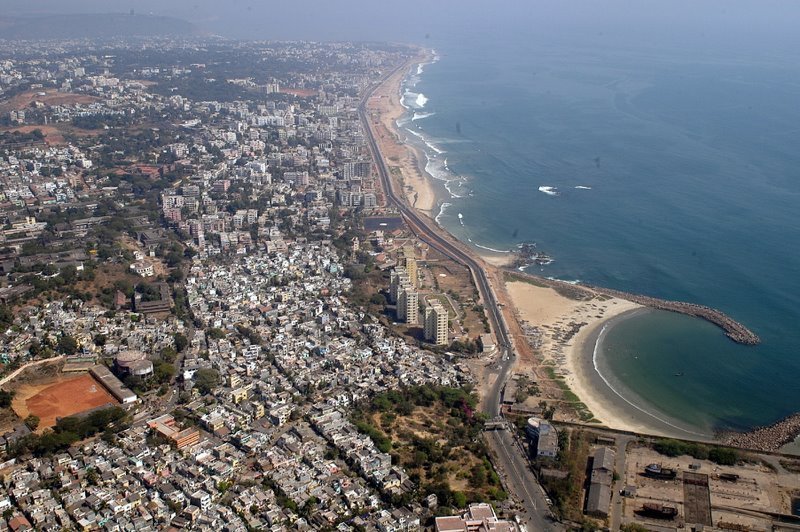Google Places a $15 Billion Bet on India’s AI Rise—and the World Is Watching
A New Tech Front Emerges in the U.S.–China Rivalry
Google just made one of its boldest moves yet. On Tuesday, the company announced a massive $15 billion investment to build a next-generation AI hub in Visakhapatnam, a coastal city in India’s Andhra Pradesh state. This isn’t just another data center. It’s Google’s largest single investment in India and a strategic play that signals a shifting balance in the global AI race between the United States and China.
By putting this project in India—a nation with over a billion internet users and a booming tech workforce—Google is betting that the country is ready to move beyond outsourcing and step into the spotlight as a true AI powerhouse.
The facility will pack data center infrastructure, renewable energy systems, and even a subsea cable gateway into one gigantic campus. Industry experts say this could be India’s most ambitious technological leap yet.
The announcement came during the Bharat AI Shakti event, where major Indian officials like Finance Minister Nirmala Sitharaman and IT Minister Ashwini Vaishnaw were in attendance. India desperately needs more computing power, and this hub aims to solve a long-standing bottleneck that has slowed the country’s AI ambitions.

Why Visakhapatnam Is the Sleeper Move No One Saw Coming
On the surface, choosing Visakhapatnam may look like a regional diversification strategy. In reality, it’s a calculated strike.
For years, Mumbai and Chennai have controlled most of India’s global connectivity. Visakhapatnam now wants to break their monopoly—much like how Singapore dominates Southeast Asia’s digital traffic.
By landing an international subsea cable in Vizag, Google creates a new digital gateway into India. That means faster connections, lower latency, and less dependence on overburdened western and southern routes.
Inside the hub, Google will deploy its full AI stack—Tensor Processing Units, Gemini models, and the same infrastructure that powers Search, YouTube, and Workspace. This gives Indian enterprises access to world-class AI tools without relying on overseas servers.
Google isn’t acting alone. It’s teaming up with infrastructure giant AdaniConneX and telecom leader Bharti Airtel. AdaniConneX is building a gigawatt-scale data platform across India, while Airtel will handle fiber networks and cable station operations. Even Meta is sniffing around the region for subsea projects, which hints at a wider tech land grab.
The Numbers Reveal a Much Bigger Vision
The economics of this project stretch far beyond Indian borders. A report by Access Partnership projects the hub will generate at least $15 billion in U.S. GDP over the next five years by boosting cloud usage and funneling American expertise into the region.
For India, the project could create 188,000 direct and indirect jobs each year and inject over 11,000 crore rupees into Andhra Pradesh’s economy by 2028.
But the data tells a more sobering story too. India’s data center capacity has tripled since 2019 and now exceeds one gigawatt. Impressive, right? The problem is digital demand is growing even faster—at roughly 20% per year. The government launched the India AI Mission in 2024 with $1.25 billion in funding, yet domestic compute shortages still choke progress.
And then there’s the elephant in the room: energy and water.
A one-gigawatt facility running at 70% capacity needs 6.1 terawatt-hours every year. That’s enough to power one million homes. Cooling alone could consume 30 million liters of water daily. Visakhapatnam already faces water stress, so Andhra Pradesh is rushing to build a desalination plant. Whether Google helps fund it is still a mystery.
AI Is the New Battleground in Global Politics
This investment lands at a critical moment. The U.S. and China are locked in a high-tech standoff. Since 2022, the U.S. has restricted the export of advanced AI chips to China, forcing tech giants to rethink their global supply chains.
Enter India.
The U.S.-India Initiative on Critical and Emerging Technology gives both countries a framework to collaborate—and this hub fits perfectly into that strategy. It serves as a counterweight to China’s expanding AI infrastructure.
India’s regulatory landscape also plays a big role. The Digital Personal Data Protection Act restricts cross-border data flows. The Reserve Bank of India requires payments data to be stored locally. By hosting infrastructure in India, Google gains compliance advantages and bargaining power as the country pushes for digital sovereignty.
Public reaction, however, is far from unanimous. Some praise the job opportunities and global visibility. Others worry about environmental impact and exploitation. A growing concern looms in the background: Will India become an AI superpower—or just a data farm for Western tech giants? The debate echoes fears of digital colonialism resurfacing in the modern era.
The Reality Check: Building It Won’t Be Easy
Ambitious projects often hit bureaucratic speed bumps in India. Coastal Regulation Zone approvals and environmental reviews for the subsea cable could take years. Historically, these processes have delayed major infrastructure projects and driven up costs.
The biggest bottleneck? Power.
Andhra Pradesh has added around 940 megawatts of renewable energy lately and refreshed its clean energy policies, but linking a gigawatt-scale campus to the grid is a logistical maze. It requires state utilities, transmission operators, energy developers, and government approvals to move in perfect sync. If one piece slips, the entire timeline falls apart.
And let's not forget where Visakhapatnam sits—the Bay of Bengal, a notorious cyclone zone. In 2014, Cyclone Hudhud hit the city with winds over 200 km/h and left widespread damage. That means Google must build for disaster-level resilience: elevated structures, redundant power, and rapid recovery systems. All of this drives costs sky-high.
Markets Are Paying Attention—And They Should
Investors see this project as more than just infrastructure. It hints at broader shifts that could reshape telecom, energy, and cloud markets across Asia.
Bharti Airtel could benefit from higher infrastructure revenue and enterprise service demand. AdaniConneX gains credibility and scale, making it easier to raise financing and lock in long-term contracts.
Renewable developers are watching closely. Google’s goal of 24/7 carbon-free energy means large power purchase agreements combining solar, wind, and storage. That’s great for clean energy players—if they can solve seasonal supply and grid integration challenges.
Analysts suggest watching a few critical milestones: landing station clearance, power connection dates, renewable energy contracts, and the pacing of the rollout. There’s often a long gap—up to two years—between finishing the building and installing the actual hardware. Any early revenue estimates are educated guesses at best.
Meanwhile, new cable routes could erode the dominance of Mumbai and Chennai as India’s main digital gateways. Enterprises may enjoy better latency and redundancy from Vizag—but only if connectivity pricing stays competitive.
The Long Game: More Than Just a Data Center
At its core, Google’s $15 billion investment is a strategic test. It signals confidence that India, despite regulatory hurdles and infrastructure gaps, offers more long-term stability than regions caught in geopolitical crossfire.
The investment will likely roll out in phases across five years. Google isn’t just buying servers—it’s buying influence in one of the fastest-growing digital markets on Earth.
Whether Visakhapatnam becomes Asia’s eastern AI anchor or a cautionary tale depends on a web of factors outside Google’s direct control: government efficiency, power sector reforms, water management, environmental approvals, and India’s ability to balance national interests with global partnerships.
For India, the stakes are even higher. If this hub succeeds, it could spark a wave of similar mega-projects and transform the country’s digital backbone. If it fails, the world may conclude that India still can’t compete with established tech hubs like Singapore or Indonesia—despite its talent and market size.
The next 18 months will be the real tipping point. Not just for Google’s balance sheet—but for India’s place in the future of artificial intelligence.
NOT INVESTMENT ADVICE
